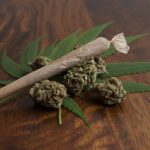Do you remember that guy who died from a cannabis overdose?
Of course you don’t, because it’s never happened. There has been not a single death related to cannabis use alone, which is a pretty amazing thing. A plant that has been used for so long and by so many people has not taken a single life.
What is even more remarkable is that the DEA, despite acknowledging this fact in a recently published guide, is stubbornly holding fast to their scheduling of cannabis as a Schedule One illicit substance. This scheduling is determined by two qualities: a lack of medicinal value, and a high risk of abuse. This means that cannabis is grouped together with drugs like heroin-drugs that actually do kill people every single day. In fact, massive portions of the country are currently in the throes of what is being called an opioid epidemic.
And states with legalized cannabis see less opioid-related deaths than those without. Yet somehow, cannabis remains a Schedule One drug in the eyes of the feds.
In 2012, former head of the DEA Michele Leonhart was asked a simple question: Which is worse, heroin or cannabis? Her reply became infamous, as she not-so-subtly evaded the question entirely by saying, “I believe all illegal drugs are bad.” It didn’t seem to occur to her at all that alcohol, a legal substance to all Americans twenty-one years of age and older, claims roughly 2,200 lives per year via alcohol poisoning in just the US alone. That’s six deaths per day, compared to cannabis’ zero-ever, throughout recorded history.
When DEA administrator Chuck Rosenberg rejected numerous petitions for his agency to reclassify cannabis in 2016, he disclosed that yes; cannabis is indeed less dangerous than drugs on other schedules. He admitted that he understood how this would be seen as bizarre to many. After all, cocaine is a Schedule Two substance due to its potential use as a topical anesthetic. He’s right-it does sound bizarre. But Rosenberg went on to defend it anyway via writing:
“In that sense, drug scheduling is unlike the Saffir-Simpson scale or the Richter scale. Movement up those two scales indicates increasing severity and damage (for hurricanes and earthquakes, respectively); not so with drug scheduling. It is best not to think of drug scheduling as an escalating ‘danger’ scale – rather, specific statutory criteria (based on medical and scientific evidence) determine into which schedule a substance is placed.”
A DEA spokesperson told Yahoo! News that there is a five-part “test” that exists to differentiate a Schedule One substance from a Schedule Two substance. These are the five parts of this test:
Other Schedule One drugs include LSD, Peyote (mescaline), MDMA (ecstasy), psychedelic mushrooms, heroin, Quaaludes and bath salts.
(1184)





Leave A Reply